Consider a healthcare facility struggling to get the right providers on board. This challenge has slowed down operations, reduced revenue, and frustrated leadership. Why the hold-up? The credentialing process. As hospitals and other facilities work to get their new hires up and running, they discover their qualifications don’t match what the organization expected.
This leads to delays and can even force the organization to retract its job offer. Credentialing in healthcare is a complex yet vital process. While this scenario is relatable, the good news is that this guide will offer valuable insights to help you smooth out the provider credentialing process and get your new hires working quickly.
Azulity’s provider credentialing services can help you achieve your goals by streamlining the credentialing process so you can reduce the time it takes to get qualified providers on board.
Importance of Credentialing in Healthcare


Credentialing Builds Trust in Health Care
Credentialing in healthcare establishes trust between patients and healthcare professionals. When patients see that a physician or health care facility has received proper credentialing, they can rest assured that this provider meets industry standards and has the qualifications to treat them.
Prevent Revenue Loss with Credentialing
Credentialing helps healthcare practices avoid losing money from insurance claims. When a physician moves to a new practice or opens their own, insurance companies must reimburse this provider for their services. If a practice needs proper credentialing for this physician, it can result in delayed or denied claims, leading to revenue loss.
Credentialing Lowers the Risk of Medical Errors
Medical mistakes kill approximately 98,000 Americans every year. This staggering statistic has prompted industry leaders to push for better standards of exposure and competency, as well as disciplinary measures against healthcare professionals. Credentialing for healthcare facilities and independent practitioners lowers the risk of medical errors.
Credentialing Protects You from Lawsuits
Having an accurate and complete record of every practitioner’s credentials will be helpful in litigation. For example, you can save yourself if there is a negligence claim against a healthcare professional in your institution. In short, you can save your facility from a lawsuit by confirming that you verified all of their credentials as required.
Credentialing with Insurance Networks Takes Time and Patience
The process takes patience and time. First, you have to decide to proceed. Second, you must shortlist the insurance companies you want to work with. Finally, it’s time to take the first step. Knowing that the credentialing procedure may take a few months is essential.
Related Reading
- CVO Credentialing
- Best Credentialing Software
- How to Credential a Provider
- How Long Does Credentialing Take
9 Best Practices for Credentialing in Healthcare


1. Trust the Experts at Azulity to Help with Healthcare Credentialing
Azulity specializes in healthcare master data management and provider credentialing services, bringing proven expertise in implementing healthcare data solutions and credentialing across the US. Our comprehensive platform ensures consistent patient, provider, location, and claims data synchronization across all systems and departments.
Key features include healthcare MDM, provider MDM, reference data management, credentialing, and provider enrollment. We serve healthcare technology leaders from CIOs and CDOs to VPs of data platforms and credentialing, helping them eliminate the costly problems of fragmented data systems. Book a call to learn more about our healthcare master data management services today!
2. Get Ready for Credentialing
With so many documents, the credentialing process can often overwhelm healthcare providers. In short, the process has two steps:
Credentialing
The credentialing phase is when the insurance company checks all your credentials and verifies whether you meet their requirements for participating in their network.
Contracting
The contracting phase is when the company issues you a participating provider agreement. This agreement defines the terms of participation for receiving in-network reimbursement for your claims.
3. Prioritize Insurance Companies
Because you could be required to submit multiple applications, it could be beneficial to prioritize the dossiers you file first. If you send many of your billings to a single insurance company, finish out their healthcare credentialing form first.
Stay up to date about individual health insurance rules. Some health insurers enable providers already insured in another state to undergo a simplified process, which could result in faster approvals. Many insurance providers have shortened the application process for providers already credentialed throughout the country.
Example
A dermatology practice in California saw that 75% of its patients were insured through Blue Cross Blue Shield (BCBS). The practice prioritized submitting the BCBS credentialing form first and coordinated with their support team for a faster review. Meanwhile, for a secondary insurer, Aetna, the provider leveraged an expedited process by proving prior credentialing in another state.
4. Check for Accurate Information
Now, the accuracy and standard of data are crucial when you start to compile the necessary papers and fill out individual applications. Follow these procedures before filing any applications: Run a full background check. Check educational background, licenses, professional certification, and reputation with healthcare groups like AMA, ECFMG, and ABMS.
Examine the credentials, advantages, and health insurance claims background. Once you’ve gathered and reviewed these papers, you can present them to facility administration, who will decide which particular privileges to give to the provider. This information is crucial for the credentialing process. Other alternatives include:
Credentialing software
The ideal credentialing software saves data and can include features that make your credentialing procedure more straightforward and effective.
Outsourcing
Is your human resources department overburdened with medical credentialing services? Outsourcing or using a medical credentialing service may reduce time and money.
Example
A rural hospital in Texas was onboarding a surgeon. A clerical error caused a mismatch in the surgeon’s medical license number during credentialing. Additionally, the surgeon’s name on the CAQH profile differed from their license record, so correcting this information was delayed a month.
5. Completing the Council for Affordable Quality Healthcare (CAQH)
Several large medical insurers mandate partner clinics to register for CAQH accreditation (Simultaneously, they must register their applications). Once your clinic has submitted a form to a specific insurer, they will give you a Council for Affordable Quality Healthcare (CAQH) ID number and an invitation to register.
Any information must be correct to ensure CAQH clearance. After submitting your initial application, be ready to re-attest. What is re-attestation? To maintain ongoing insurance eligibility, one must verify whether a provider’s data is accurate four times yearly.
Example
A pediatric clinic in Ohio received a CAQH invitation after applying for credentialing with Humana. The clinic missed the first re-attestation reminder, temporarily stalling the approval process. After implementing calendar reminders and assigning a dedicated staff member to manage CAQH updates, they avoided future delays.
6. Gather Information
A healthcare facility or health insurance plan asks the provider for information on his or her background, licenses, education, etc. The provider may submit the information in a questionnaire through email or software. Sometimes, the healthcare facility or insurance company works with a third-party company—called a credentials verification organization (CVO)—that works with the provider to gather and verify information. Organizations often hire CVOs to allow for more efficient credentialing.
7. Check the Information
Often, the facility or insurance company will do the background work. They will directly correspond with licensing agencies, medical schools, and other entities to verify the provider’s information. In other cases, the facility or insurance company may use credentialing software to continuously check information that licensing agencies and other entities make available online. The CVO may also run verification checks.
Many healthcare organizations use collaboration and work management platforms to help them organize and record provider information and get automatic updates when specific credentials expire or need to be re-checked. In all cases, the checks include monitoring reports about medical incidents, malpractice claims, or other information that could raise questions about whether to credential or re-credential the provider.
8. Award the Provider with Credentials
After the organization verifies all required credentials and finds no negative issues, the healthcare facility awards credentials to the provider. After the health insurance company completes a similar process, it can approve the provider as an in-network provider. The insurance company will pay the provider to treat insurance patients.
9. Keeping Track
Don’t wait 5 or 6 months for an insurance provider to contact you. Credentialing medical specialists reveal the importance of continuous follow-ups for quick approval. Develop connections with central insurance business personnel.
Developing a good working relationship with management, executive associates, and other staff members could help guarantee that applications are processed quickly. Instead of following up through email to boost response chances, use the phone. If you notice that more info is necessary, compile and check all documentation as quickly as possible.
Example
A family medicine practice in Atlanta used Excel spreadsheets to track credentialing statuses but often missed follow-ups. After a consultant recommended using a credentialing management system (e.g., Modio Health), they automated reminders for follow-ups and document updates. This proactive approach halved their typical approval time with insurers.
Mistakes to Avoid When Credentialing in Healthcare


1. Overlooking Staffing Needs for Credentialing
Healthcare credentialing, or provider credentialing, is a tedious process requiring precision, attention to detail, and patience. An organization must verify all certifications and licenses for every provider who administers patient services. Depending on an organization’s size, some may verify the employment histories and qualifications of hundreds or thousands of providers.
Properly credentialing every individual is an enormous amount of work for a team. Hospitals or health systems may need to allocate adequate resources or staff to complete the medical credentialing process. This can result in lost revenue due to delayed credentialing and stressed, overworked staff who are more likely to make mistakes.
2. Submitting Incomplete Credentialing Applications
The average provider enrollment application requires an overwhelming amount of information and data. Please complete the entire application accurately or accept an incomplete one to avoid reimbursement delays due to claim denials.
3. Allowing a Physician to Treat Patients Before Credentialing is Completed
Courts have held hospitals liable when a physician falsifies credentials and the hospital fails to do its due diligence in verifying them. In one of the earliest negligent credentialing cases, a Wisconsin hospital was eager to book surgical cases and failed to verify a surgeon’s credentials properly. Unfortunately, the surgeon provided false information on the application, and the hospital’s failure to detect it led to patient harm when hip surgery went awry.
4. Not Updating and Verifying Information
According to federal and state laws, healthcare practitioners must renew their licenses and credentials regularly. Initial and re-credentialing help ensure that healthcare providers are current with their board certifications and licenses.
When a hospital fails to keep up with re-credentialing, healthcare providers and facilities can perform non-certified or licensed services. This can lead to adverse patient outcomes and expensive malpractice lawsuits.
5. Covering Up Prior Adverse Actions
Failing to disclose an adverse action is a severe oversight by any provider. However, it is also the responsibility of a healthcare organization to conduct screenings for prior disciplinary actions with a thorough background check.
Hospitals and healthcare organizations must verify credentials against databases such as exclusion, sanction, and debarment lists. Using a trusted source that pulls data from primary sources is essential.
6. Failing to Report Adverse Actions
Similar to mistake number 5, providers must report adverse actions, such as license revocation, Exclusion from third-party programs, Suspension or voluntary relinquishment of medical staff membership, clinical privileges, or state or federal licenses. Hospitals and health systems are accountable for a provider’s omission. Therefore, due diligence requires background checks to identify current and historical adverse actions.
7. Failing to Report Adverse Actions to the National Practitioner Data Bank (NPDB)
Providers and organizations that fail to report negative actions to the NPDB withhold critical information other organizations need to complete medical credentialing. The NPDB requires reporting of the following actions:
- Medical malpractice payments,
- Federal and state licensure and certification actions,
- Adverse clinical privileges actions,
- Adverse professional society membership actions,
- Negative actions or findings by private accreditation and peer review organizations,
- Healthcare-related criminal convictions and civil judgments,
- Exclusions from participation in a federal or state healthcare program, including
- Medicare and Medicaid exclusions Other adjudicated actions or decisions.
8. Not Taking Peer Review Seriously
Information provided in a peer review or investigation should be taken seriously and evaluated as part of the credentialing process. Peer references can shed light on the capabilities and competencies of a provider that you cannot glean from simply checking education, training, or license status.
Related Reading
- Credentialing and Privileging
- How Much Does Credentialing Cost
- Types of Credentialing in Healthcare
- Hospital Credentialing Requirements
- Primary Source Verification Credentialing
- Provider Enrollment and Credentialing
6 Best Services for Healthcare Credentialing


1. Azulity: Healthcare Credentialing Done Right
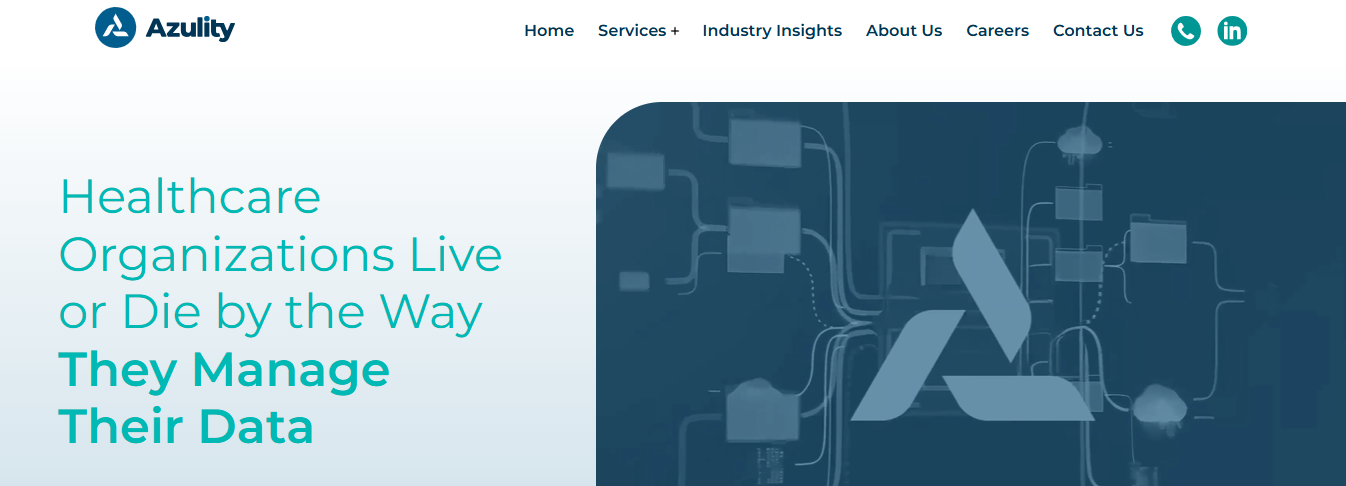

Azulity focuses on healthcare master data management and provider credentialing services. Its extensive experience in healthcare data solutions and credentialing helps organizations streamline operations.
Azulity’s platform consistently synchronizes patient, provider, location, and claims data across all systems and departments. Key features include healthcare MDM, provider MDM, reference data management, credentialing, and provider enrollment. Azulity serves healthcare technology leaders, helping them eliminate the costly problems of fragmented data systems.
2. KLAS: Giving Credentialing Processes a Boost
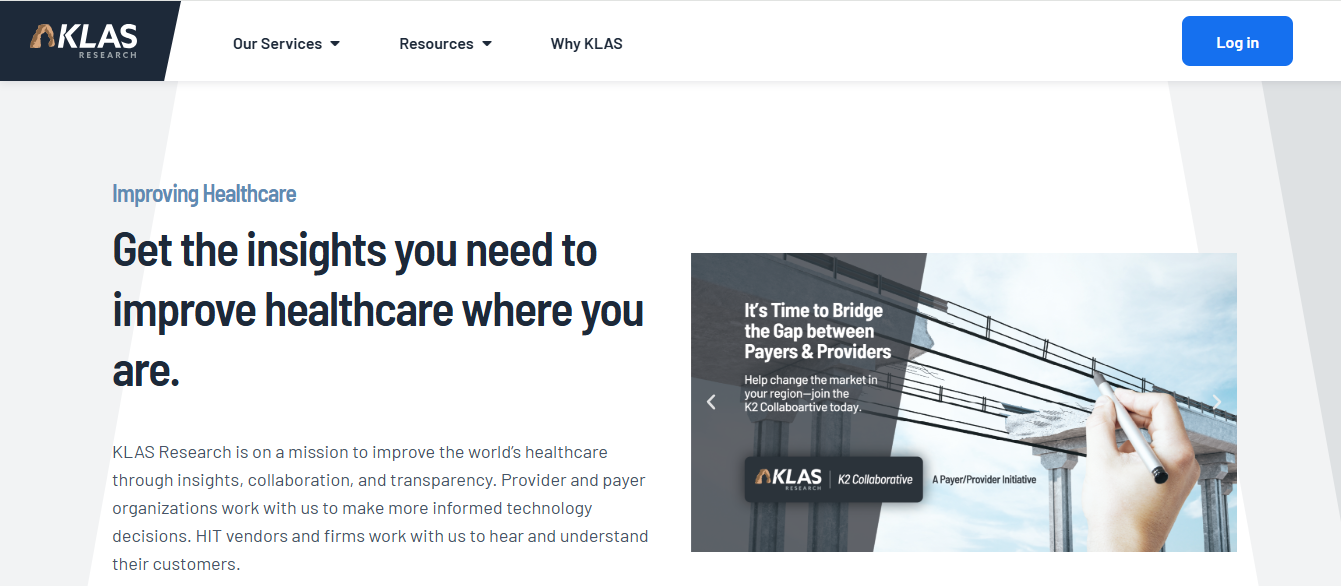

KLAS is software designed to help healthcare organizations streamline, automate, and track the credentialing and re-credentialing process. The software helps manage primary source verification, the application process, organizational records, compliance training, immunizations, peer reviews, and ongoing performance.
Pros
- Mission: KLAS aims to improve healthcare through technology, which many users appreciate.
- Culture: KLAS has a friendly culture that many employees enjoy.
- Reviews: KLAS gets praise for its honest, fair reviews of healthcare technology.
Cons
- Work environment: Some employees report the work environment can be frustrating, with extended hours, burnout, and underpayment.
- Growth opportunities: KLAS has fewer areas for growth than some comparable organizations.
Credentialing Spectrum: Simplifying Credentialing for Everyone
Credentialing Spectrum is a secured, cloud-based medical credentialing software for facility, payer, and contract management. It is a healthcare credentialing system that simplifies the process and increases efficiency. Credentialing Spectrum is a one-click comprehensive automation system that makes it convenient.
Pros
- Automates tasks: Credentialing Spectrum can automate provider credentialing, enrollment, and privilege management.
- Saves time: Credentialing Spectrum can help save time for staff by automating tasks.
- Improves efficiency: Credentialing Spectrum can improve efficiency for healthcare organizations.
Cons
- Credentialing is complex: The credentialing process can involve many variables.
- Lengthy process: The credentialing process can be lengthy and labor-intensive, taking up to 90 days for an application review.
3. NextGen Healthcare EHR: Healthcare Solutions for a New Era
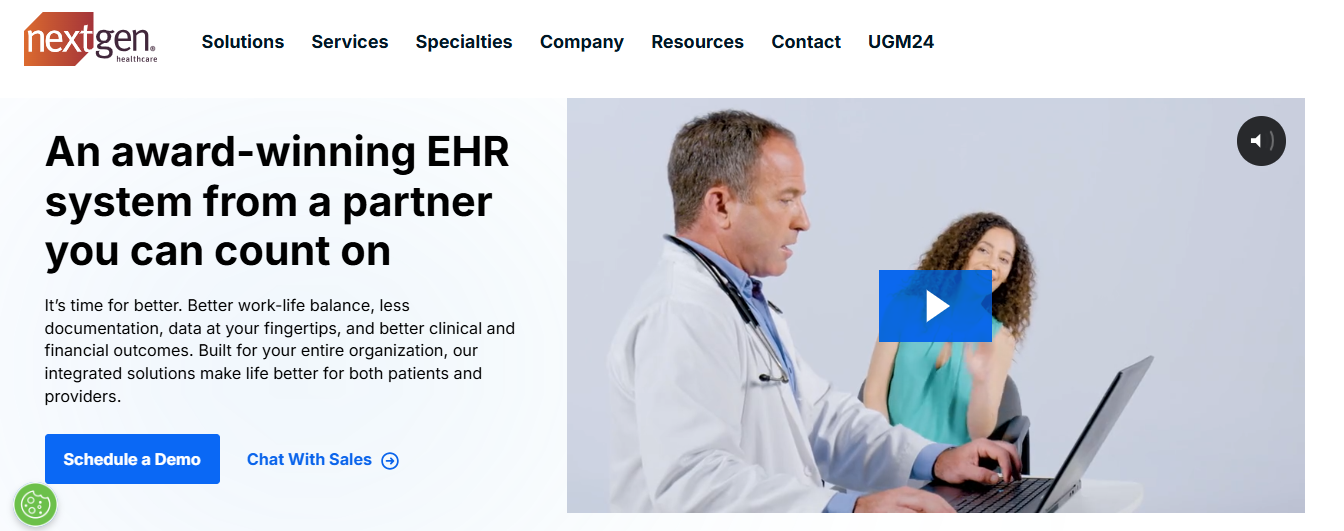

NextGen Healthcare is a leader in healthcare software and services that enable the transformation of ambulatory healthcare. NextGen Office (1-10 doctors) and NextGen Enterprise (10+ doctors) are intelligent electronic health record solutions that help ambulatory practices reduce the burden of documentation, improve clinical outcomes, connect to other health systems, increase provider and patient satisfaction, streamline revenue cycles, and foster healthier communities.
Pros
- User-friendly: The interface is designed for beginners.
- Comprehensive: NextGen offers a variety of features for managing patient care.
- Affordable: Smaller practices may find NextGen more affordable than other EHR systems.
- Secure: NextGen offers secure data sharing and storage.
- Patient portal: The portal can help engage patients and improve outcomes.
Cons
- Cost: The price of NextGen may be a deterrent for smaller practices.
- Complexity: Some users find NextGen to be complex.
- Setup: Some users need help to set up and transfer data.
4. MedTrainer: A Go-To for Healthcare Credentialing
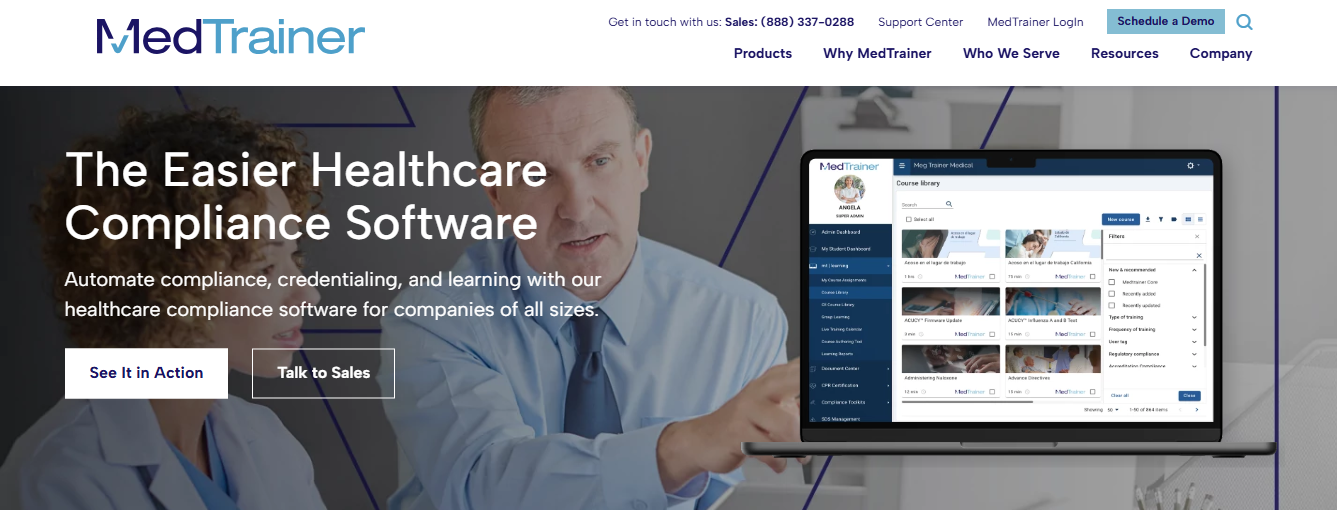

MedTrainer Credentialing is built for healthcare organizations that want to manage the credentialing process but need to complete more in less time. G2 reviewers agree, ranking MedTrainer as a High Performer for Healthcare Credentialing Software for the second straight quarter and notching the highest overall score for Quality of Support in the G2 Summer 2024 Report.
More than 3,000 organizations rely on MedTrainer to streamline compliance with a unified digital platform that optimizes workflows and accelerates education, credentialing, and documentation. As a leader in healthcare technology, MedTrainer constantly innovates to give customers the best experience and the most capabilities within one platform.
Pros
- Comprehensive solution: MedTrainer is a comprehensive healthcare compliance training and credentialing solution.
- Intuitive dashboard: The intuitive dashboard provides real-time visibility and analytics.
- Responsive customer support: Users appreciate the responsive customer support.
- Up-to-date content: MedTrainer offers an up-to-date content library from expert partners.
Cons
- Learning curve: Some users mentioned the learning curve to be slightly steep.
- Customizations: Customizations may be required to meet unique organizational needs fully.
5. Symplr Credentialing: The Right Fit for Large Organizations
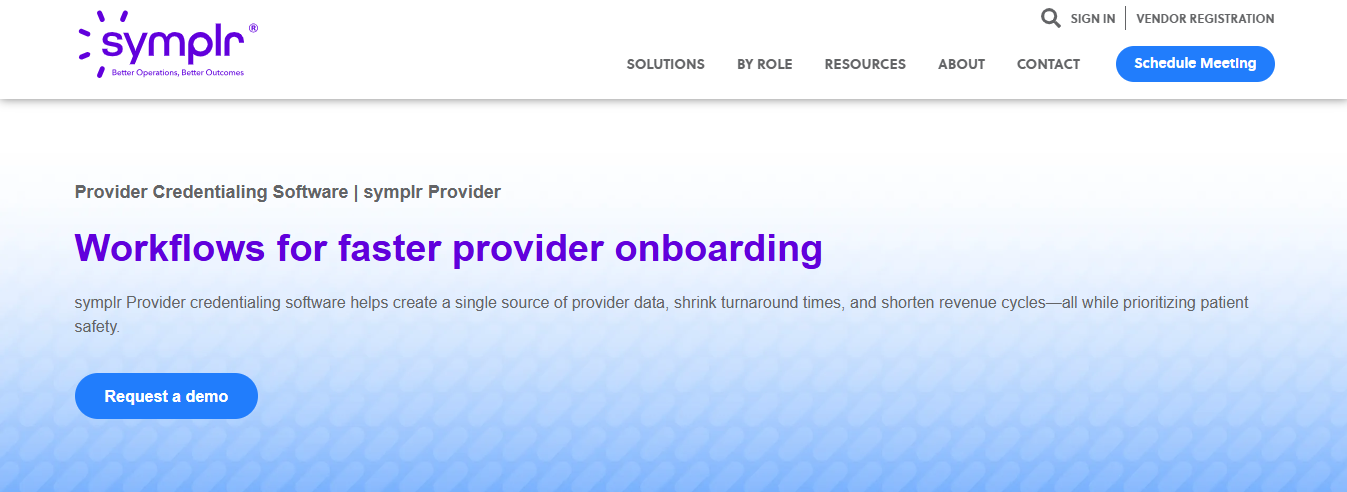

Symplr’s provider credentialing software creates a single source for data on providers, reduces turnaround times, and shortens the revenue cycle—all while prioritizing patient safety. It makes data collection, secure access, report generation, and ongoing compliance easier for providers, credentialing personnel, and internal approval panels.
Their customers report a reduction of 20% in credentialing timelines and a 50% reduction in committee meetings. In one automated, user-friendly hub, you can collect, verify, store, and share documents and data related to the provider lifecycle. This will save time and reduce costs. Using the built-in module, you can easily enroll payers with providers and track applications step-by-step—Automate data collection from hundreds of primary sources, including DEA, SAM, and NPDB.
Pros
- Streamlines credentialing processes.
- Enhances compliance and reduces errors.
- User-friendly interface with robust reporting tools.
- Scalable for large healthcare organizations.
Cons
- Costly for smaller practices: It can be expensive for smaller practices.
- Limited customization: Some users report limited customization options.
- Learning curve: There is a learning curve for advanced features.
Book a Call to Learn More About Our Provider Credentialing Services
Azulity specializes in provider credentialing and health care master data management. Credentialing is an essential process in health care. It verifies a provider’s qualifications, including education and training, professional background, and competency. Efficient credentialing ensures that patients receive care from qualified professionals with the necessary skills to meet their needs. Azulity’s comprehensive platform automates and streamlines healthcare credentialing processes to improve accuracy and speed.
Health Care Master Data Management
Healthcare master data management (MDM) focuses on creating and maintaining consistent, accurate, and complete data about critical business entities. These entities include patients, providers, locations, and health plans in health care. Over time, data about these entities can change or become outdated. For example, a patient’s insurance coverage may change, or a provider might switch jobs and relocate to a new facility. Healthcare organizations must be able to track these changes to ensure that care delivery operations, including billing and claims processing, run smoothly. Azulity’s healthcare MDM services help organizations eliminate the costly problems of fragmented data systems.
Provider Credentialing
Provider credentialing verifies that healthcare professionals have the education, training, and experience to deliver safe and effective patient care. Healthcare organizations and regulatory agencies perform credentialing to ensure qualified personnel staff in healthcare facilities.
The process involves thoroughly investigating a provider’s background, including their education, training, residency and fellowship programs, work history, and malpractice claims or disciplinary actions. The credentialing process creates a complete picture of a provider’s qualifications to ensure patients receive care from qualified professionals. Azulity specializes in automating and streamlining healthcare credentialing processes to improve accuracy and speed.
Provider Enrollment
Provider enrollment is distinct from credentialing but is often confused with it. While credentialing verifies a provider’s qualifications, enrollment ensures that a provider is recognized by insurance plans so that they can bill for services. Once a healthcare organization has credentialed a provider, they must also be enrolled with applicable insurance plans to ensure the facility can bill for their services. For example, suppose a patient with Blue Cross Blue Shield insurance receives care from a recently hired orthopedic surgeon.
In that case, the healthcare organization must ensure that the surgeon is credentialed and enrolled with Blue Cross Blue Shield. If the provider has only been credentialed by the organization but has yet to enroll with the insurance plan, there could be costly delays in reimbursement for services provided to the patient. Azulity’s credentialing and data management services help eliminate costly disruptions in patient care operations.
The Importance of Data Management in Health Care Credentialing
Credentialing and enrollment processes generate significant data that must be carefully tracked and managed. Healthcare organizations utilize this data to assess a provider’s qualifications and determine their level of competency to deliver care. As you can consider, the more accurate and complete these data sets are, the better.
Missing or outdated information can lead to incorrect assumptions about a provider’s background and costly errors that jeopardize patient safety. Azulity’s healthcare master data management services help organizations eliminate fragmented data sets that can complicate credentialing and enrollment processes.
